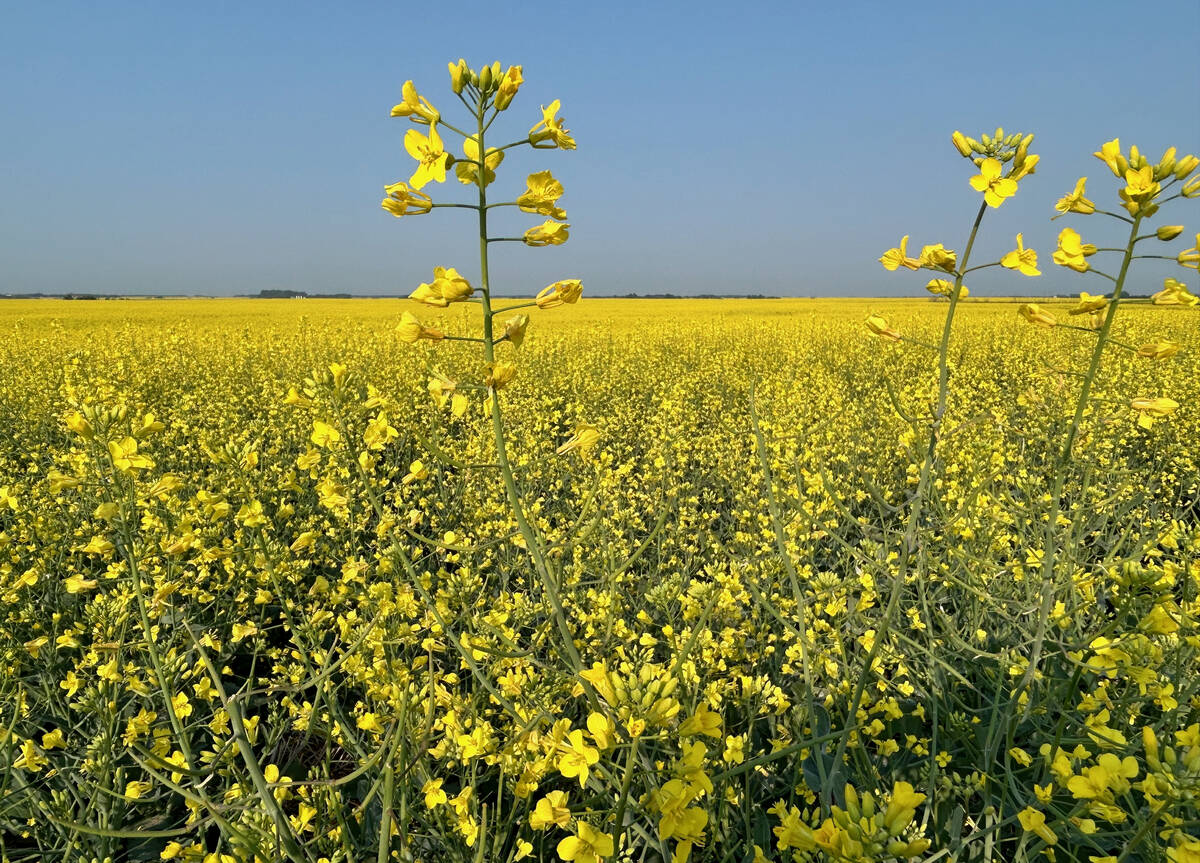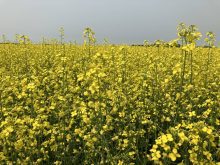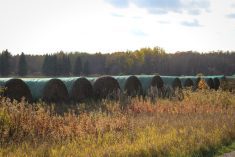Drought conditions, and the odds of more to come, have some Prairie canola growers pondering when to roll the dice on seeding, if they want to do more than feed the flea beetles.
Small-seeded crops, such as canola, have garnered particular concern from agronomists and producers worried about germination, given power dry topsoil across much of the province.
Why it matters: Canola timing has created a dilemma this year as producers don’t want to waste their seed treatment window in soil too dry to germinate, but there’s little in the forecast to suggest a more moist seed bed in coming weeks.
Read Also

ICE canola weekly outlook: Slowly grinding higher
ICE canola futures saw some choppy activity during the week ended Nov. 26, falling below nearby support at one point before clawing back from those losses to continue their steady uptrend of the past two months.
According to SMOS satellite data, reported as part of Agriculture and Agri-Food Canada’s Canadian Drought Monitor, saturated surface soil moisture sat over 10 per cent below normal across much of Manitoba during the month of April. Almost all agricultural regions in the province were in severe to extreme drought, the monitor reported, as of the end of April.
Conditions have led some agronomists to urge producers to wait for better moisture or risk running out the clock on their seed treatment.
Common best practice puts effective seed treatment window at three weeks post-seeding — stretching perhaps to four, under poor feeding conditions for flea beetles, according to Manitoba provincial extension entomologist John Gavloksi.
Plants that have not yet reached the three- to four-leaf stage at that point are still vulnerable to economic levels of damage.
It’s an issue Manitoba producers have run into in the not-so-distant past. In 2019, Manitoba Agricultural Services Corp. reported a spike in reseed claims, partially driven by flea beetle damage in early-seeded canola. Cold, dry weather that spring hindered germination and stressed plants with frost.
“The reality is anything that really is going to keep the plants either from germinating or from growing vigorously as a seedling is going to increase the risk of flea beetle injury,” Gavloski said.
Weather models, however, have cast doubt on the chance of rain should farmers choose to wait.
“That’s making it very tough this year to make that call,” Gavloski said. “At some point, you have to get the canola in the ground. In an ideal world, you would get a rain within a few days of that seeding, but that may not happen this year.”
Justine Cornelsen, agronomist with the Canola Council of Canada at Virden, Man., says producers are starting to chase moisture when seeding, and the first priority for many is to simply get it in the ground.
“I’ve kind of been telling people that we are still the middle of the month. We’ve got an open forecast. If you can, try to time it with the rainfall,” she said, although she acknowledged rain is far from certain.
Producers should also scout to know how far down moisture is on their specific fields.
“For canola seed, if you can set it on moisture, it will still germinate and get going,” she said. “We’re at the point now in the province where our soil temperatures are nice. If you’re into moisture and you’re seeding now, that canola should come up and out of the ground relatively quickly.”
From there, though, growth will slow if crops do not get rain, she added.
“It’s going to take a little while for that rooting system to really reach down,” she said. “My other concern is, if you look at the forecast, we’re supposed to be like 30 C, so really, really hot in already-dry conditions is going to stress out that crop.”
Into that, she added, flea beetles are “here and ready to eat.”
Producers can, however, set themselves up for success with the right plant population, according to the agronomist.
The Canola Council of Canada recommends a target of five to eight plants per square foot.
Cornelsen urged producers to proactively scout and know their plant stand to know how much grace they have before plant losses fall below that range.
“Look at the damage,” she said. “If you’re seeing extreme damage, if they’re starting to take plants or you’ve reached that 25 per cent defoliation, that’s where that (foliar) application should happen.”
It is difficult to gauge how heavy flea beetle pressure will be this year, Gavloski added, since little crop is out of the ground. At the same time, however, he added, the province has seen chronically high levels of the pest regularly, and it is reasonable to assume that similar challenges wait this year.
— Alexis Stockford is a reporter for the Manitoba Co-operator at Brandon, Man.
















